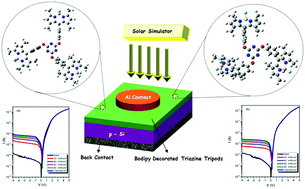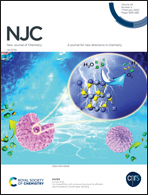Solution-processable BODIPY decorated triazine photodiodes and their comprehensive photophysical evaluation†
Abstract
Solution-processed organic photodiodes can function as thin-film candidates for solid-state photosensors in various optoelectronic applications due to the physical and chemical tuneability. In spite of their exclusive optical, structural, and electronic properties, the development of BODIPY based organic phodiodes has lagged behind that of other luminescent chromophore units. Here, we demonstrate the design, synthesis, and characterization of new BODIPY decorated triazine tripods for next-generation solution-processed photosensor applications. The photophysical and thermal properties of the BODIPY decorated triazines were determined. Furthermore, the photo-electrochemical properties of the synthesized compounds have been studied in detail using a photoconductivity measurement system. The potential of the prepared diodes as sensors in solar tracking systems has been investigated. Also, quantum chemical calculations were applied to those compounds to examine the effect of both OH groups and different binding positions on those compounds in comparison with experimentally observed data. As a potential application area, the photodiode properties of the designed molecules were tested here. The obtained photoelectrical results indicate that BODIPY decorated triazine tripod based photodiodes can be used as a photosensor in optic control systems.



 Please wait while we load your content...
Please wait while we load your content...